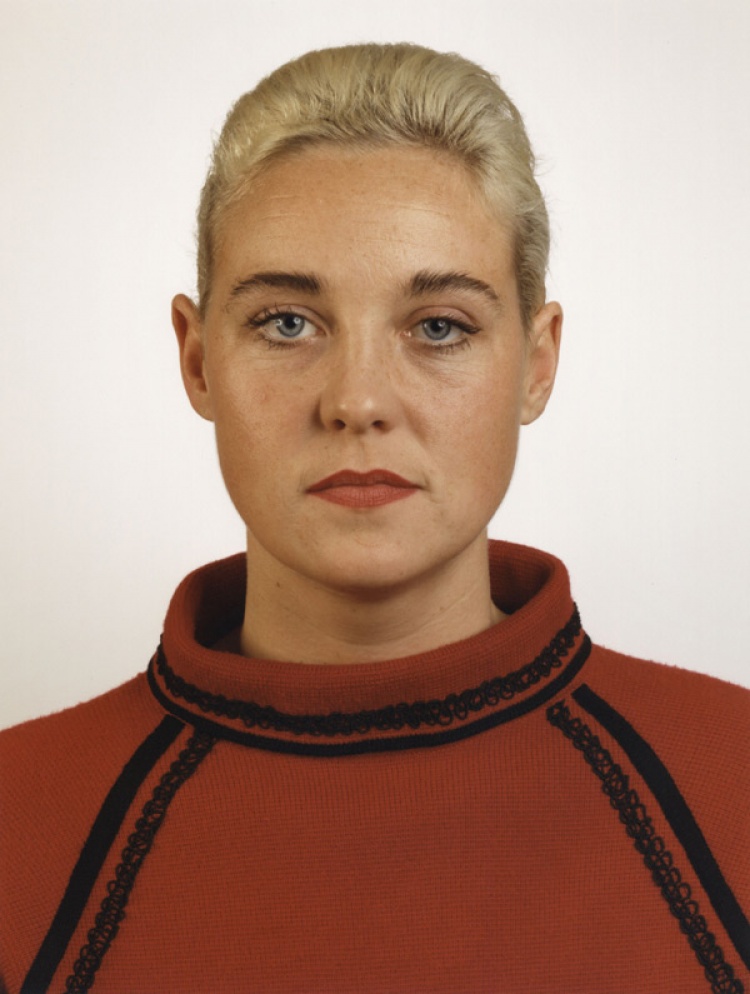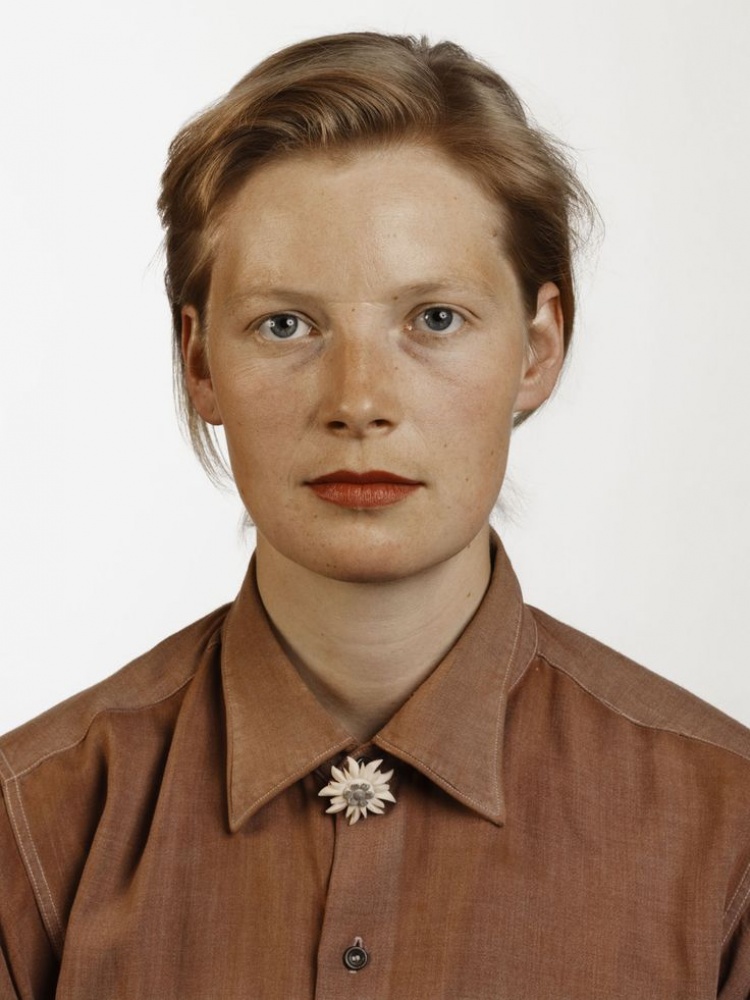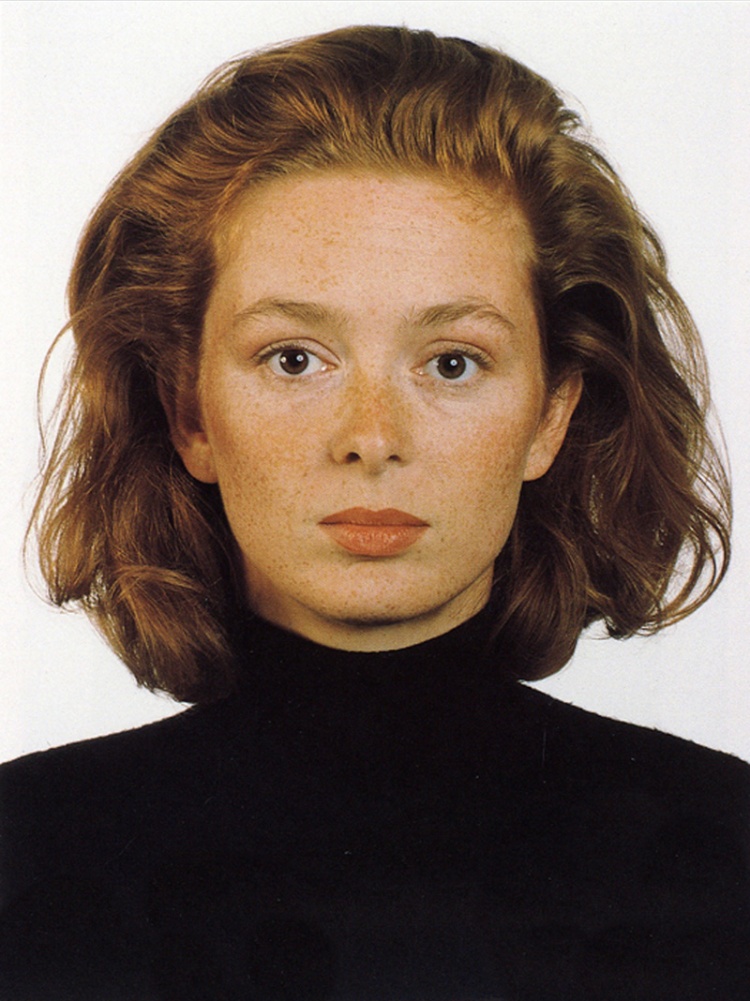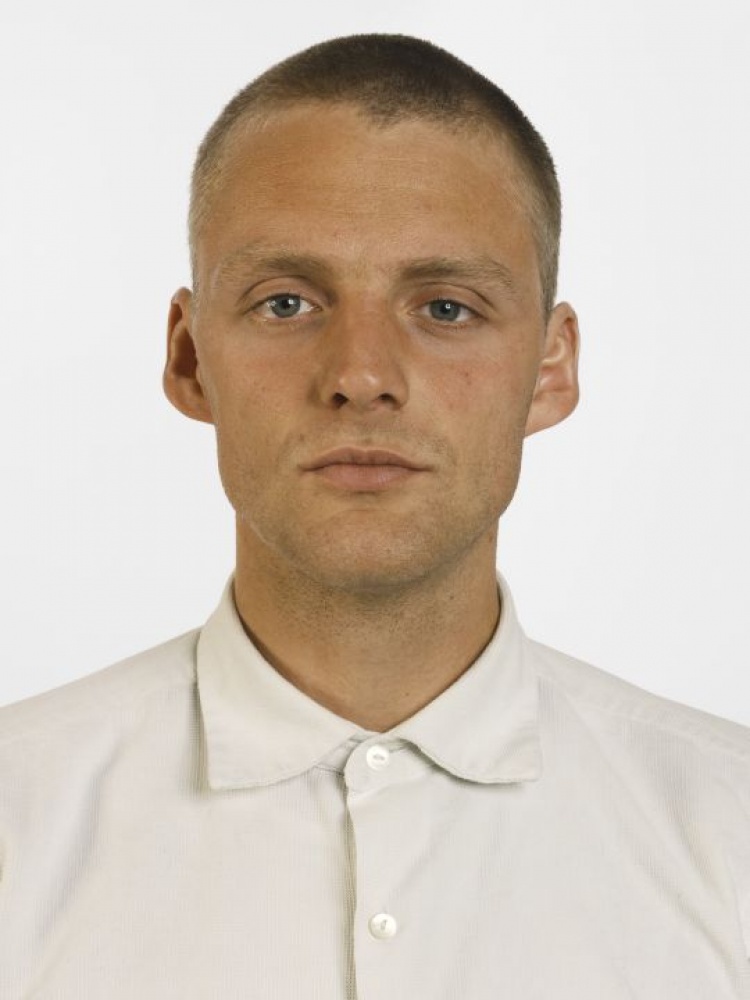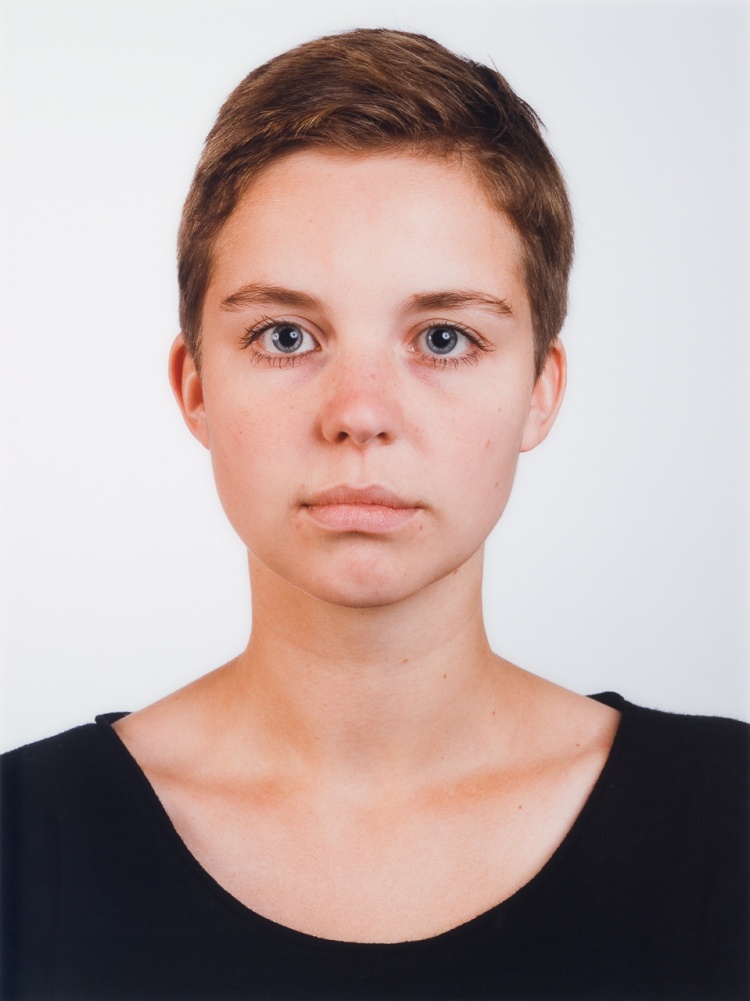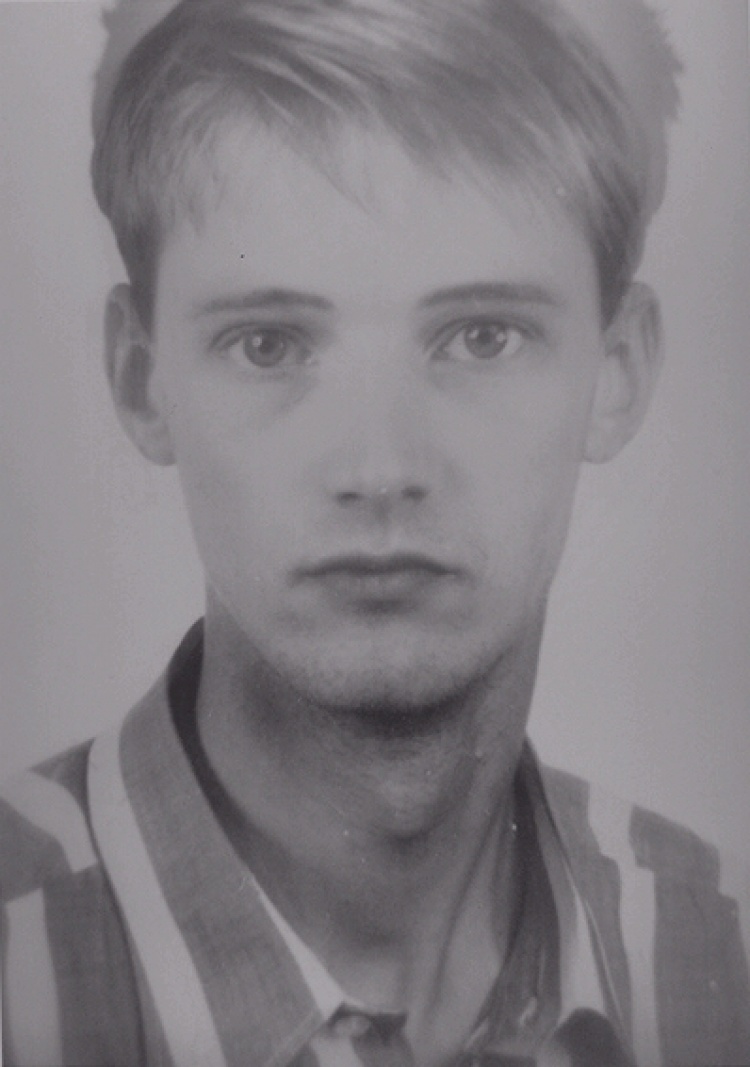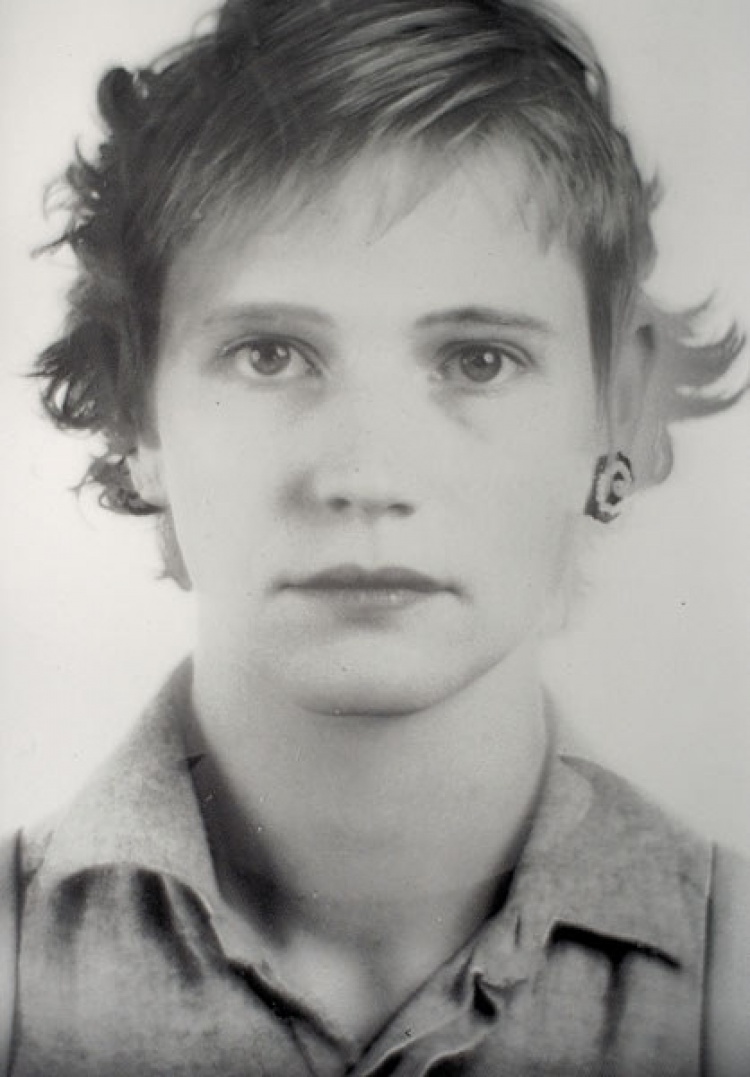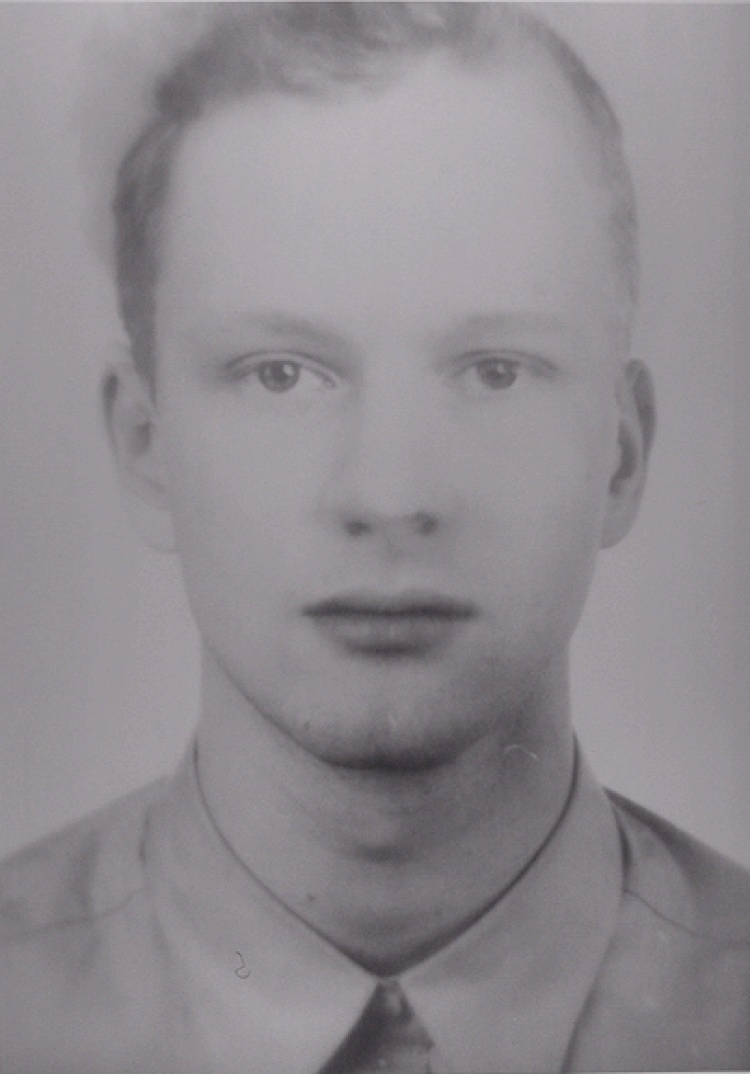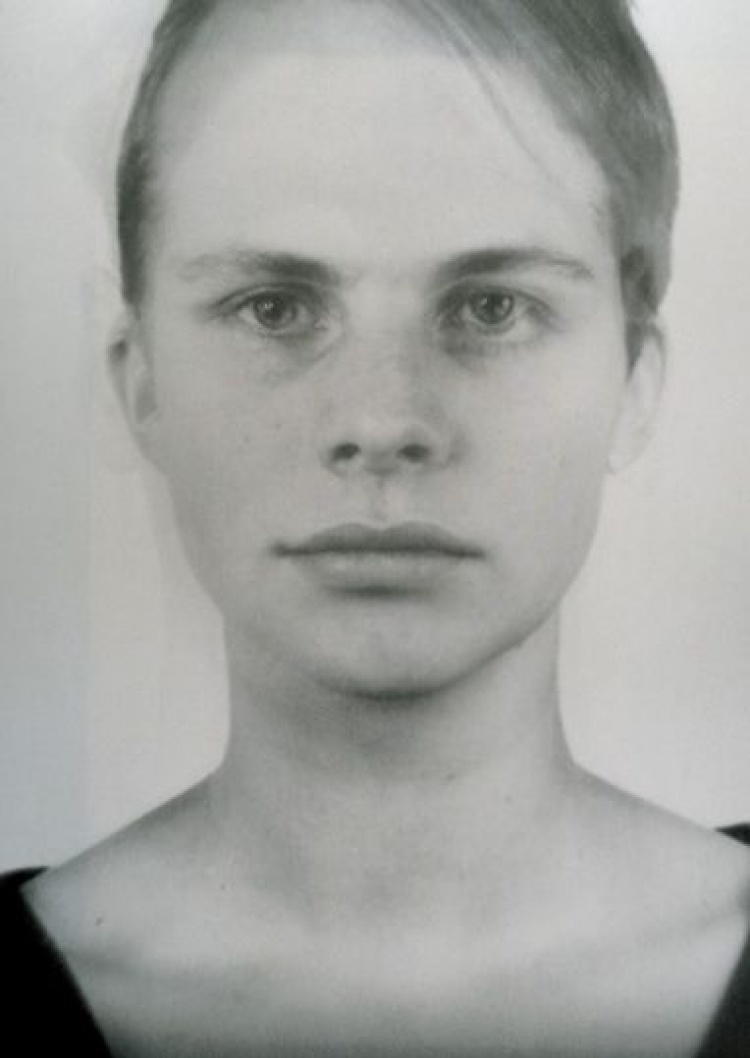11 May 2017 // Sanne Schrijver //Amersfoort
//THOMAS RUFF
Thomas Ruff’s made two series focusing on portraits. “Portraits” (1981–present) and “Other Portraits” (1994–95) best convey his varied artistic motives. Traditionally, portrait photography attempts to reveal the psychology of the depicted subjects through the strategic use of lighting, color, and setting, or by focusing on particular physical details. Both of Ruff’s portrait series undermine this goal, in very different ways. In “Portraits”, sitters are placed before a neutral background, facing the camera without expression, bathed in an even light. This method elicits comparisons to passport photos, the mood of which these works share, except that Ruff enlarges these images to upward of two meters in height. While sharing the scale of these pictures, the images in “Other Portraits” adopt an opposite representational strategy: the subjects’ likenesses are clearly altered, their facial features combined employing the same technology used by law enforcement for creating composite image of suspects. While the monumental physical presence and objective rendering of the faces in “Portraits” overshadow the individual personalities of those portrayed, but in “Other Portraits” such techniques of exaggeration are altogether absent. Ruff posits photographic objectivity only to expose it as fiction.
